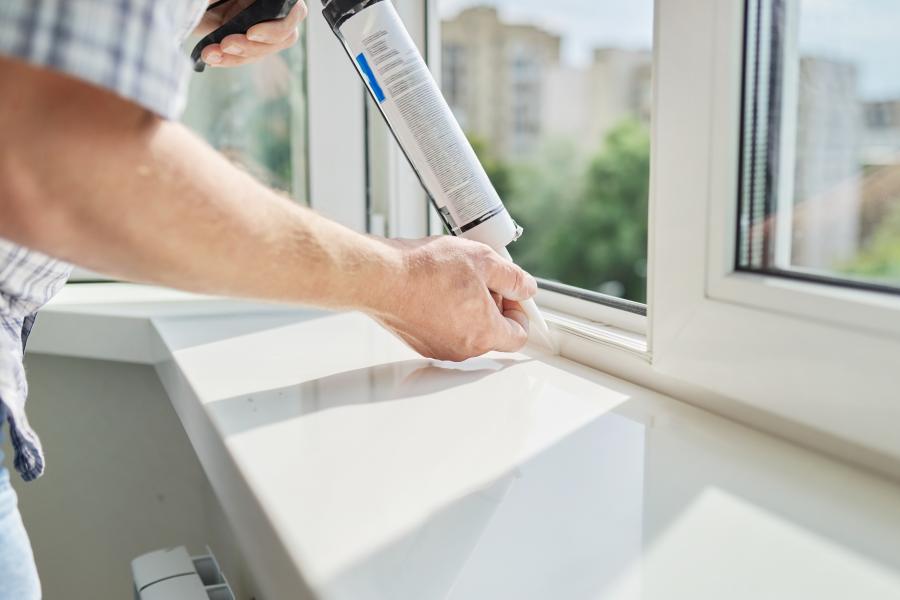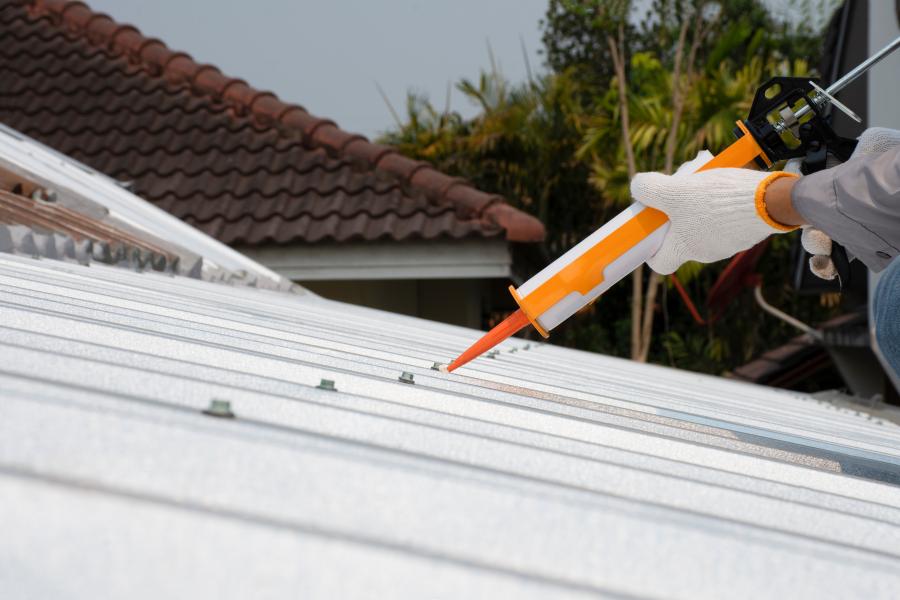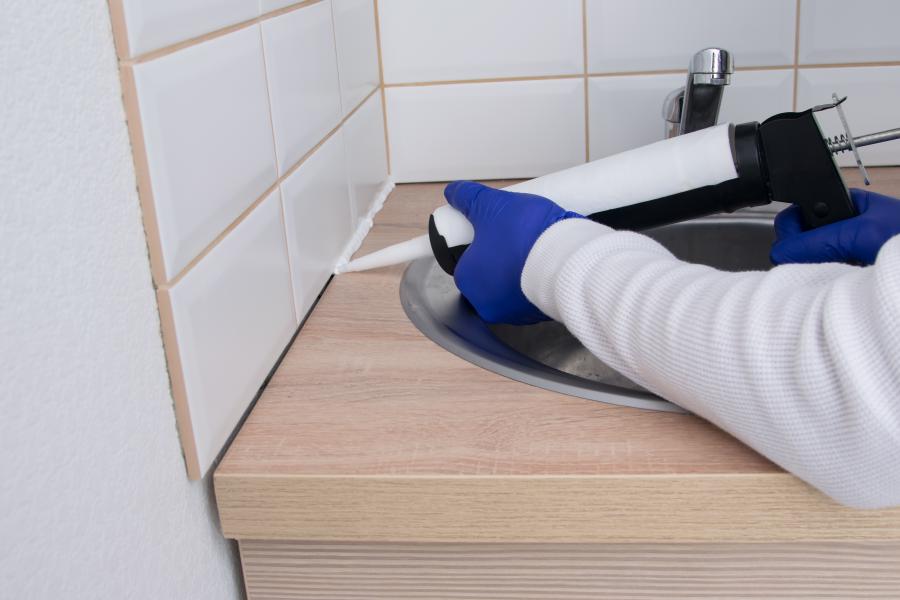Expert guidance from BoPin Construction Chemicals – understanding professional roofing solutions
The Last Roof You May Ever Need
Your roof is your building’s first line of defense against the elements. But traditional roofing systems have a fatal flaw: seams.
Over time, these seams fail. Water finds its way through. Damage accumulates. And eventually, you face a costly replacement.
What if you could eliminate the seams entirely?
This comprehensive guide will introduce you to the power of silicone roof coating systems. We’ll explain why this technology represents a game-changer for flat and low-slope roofs. You’ll learn how it can save you money. And we’ll show you what to look for in a professional-grade system.
The result? The knowledge to make informed decisions about protecting your roof investment and extending its service life by decades.
1. Why Silicone? The Unbeatable Advantages of a Monolithic Membrane
Understanding the technology helps you appreciate why silicone coating systems deliver such exceptional results.
The Science Behind Silicone Performance
Silicone is fundamentally different from other coating materials. It’s an inorganic polymer, which gives it natural advantages in roofing applications.
This inorganic structure provides inherent resistance to UV degradation. While organic coatings break down under constant sun exposure, silicone maintains its properties year after year.
The molecular structure also explains silicone’s temperature stability. It remains flexible at -40°C and stable at temperatures exceeding 150°C. This extreme range matters because roofs experience dramatic temperature swings.
Key Advantages That Matter to Building Owners
Creates a Seamless, Monolithic Membrane
This is silicone’s fundamental advantage. When applied properly, silicone coating creates a continuous membrane with no seams or joints.
No seams means no weak points. Water cannot penetrate because there are no gaps to exploit.
The coating becomes a single, unified protective layer that moves as one with temperature changes and building movement.
Impervious to Ponding Water
This represents silicone’s #1 competitive advantage over other coating types.
Flat and low-slope roofs inevitably develop areas where water ponds after rain. These low spots can hold water for days or even weeks.
Acrylic and many other coatings will re-emulsify (soften and break down) when exposed to standing water. They literally dissolve when wet for extended periods.
Silicone is hydrophobic by nature. Water beads up on the surface rather than being absorbed. The coating maintains full integrity even under permanent ponding water conditions.
For flat roof applications, this single property often determines coating selection.
Extreme UV Resistance
UV radiation destroys most roofing materials over time. They become brittle, chalky, and crack.
Silicone’s inorganic structure is inherently UV stable. It won’t chalk, crack, or lose mechanical properties despite decades of sun exposure.
This UV stability directly translates to service life. While other coatings may need replacement every 5-10 years, quality silicone systems can last 15-20+ years with proper maintenance.
“Cool Roof” Energy Savings
Modern silicone roof coatings are formulated with high solar reflectivity. They reflect 70-85% of solar radiation rather than absorbing it as heat.
This creates a “cool roof” effect. The roof surface stays significantly cooler than dark or uncoated roofs.
The temperature reduction provides measurable benefits:
- 10-30% reduction in cooling costs depending on climate and building type
- Lower peak electricity demand reducing utility charges
- Extended HVAC equipment life from reduced run time
- Improved occupant comfort in top-floor spaces
The Cool Roof Rating Council (CRRC) provides independent ratings for solar reflectance and thermal emittance, allowing objective comparison of different coating products.
Exceptional Longevity
When you combine UV resistance, water resistance, flexibility, and chemical resistance, the result is exceptional service life.
Quality silicone roof coating systems routinely deliver 15-20 year service life. Some manufacturers offer warranties extending to 20 years.
This longevity transforms the economics of roof maintenance. Instead of repeated repairs or premature replacement, you gain decades of leak-free protection.
2. Silicone vs. Other Roof Coatings: Understanding Your Options
Different coating technologies excel in different applications. Understanding the distinctions helps you select the right solution.
Professional Comparison Table
| Feature | 100% Silicone | Acrylic (Elastomeric) | Polyurethane |
|---|---|---|---|
| Ponding Water Resistance | Excellent (Best) | Poor (will fail) | Good |
| UV Stability | Excellent (Best) | Good | Requires topcoat |
| Flexibility | Excellent | Very Good | Good |
| Solar Reflectance | Very Good | Excellent (when new) | Good |
| Cost per Square Foot | Higher | Lower | Moderate |
| Best Applications | Flat/low-slope roofs with ponding | Sloped roofs, no ponding | Base coat under silicone |
| Service Life | 15-20+ years | 5-10 years | 5-10 years (alone) |
When to Choose Silicone
Silicone coating systems are the clear choice when:
- You have a flat or low-slope roof where ponding water occurs
- Long-term performance and minimal maintenance are priorities
- You want the longest possible warranty coverage
- The building is in a climate with intense UV exposure
- You’re willing to invest more upfront for lower lifecycle costs
- You need a coating that performs in extreme temperature ranges
When Other Coatings May Work
Acrylic coatings can be appropriate for:
- Sloped roofs where water drains immediately
- Budget-conscious projects where lower upfront cost matters more than longevity
- Applications where the roof can be easily accessed for more frequent maintenance
- Situations where high initial reflectivity is the primary goal
Polyurethane coatings typically serve as:
- Base coats under silicone topcoats for added protection
- Specialty applications requiring extreme abrasion resistance
- Situations where foot traffic or equipment creates wear
The Ponding Water Decision Factor
If your roof has any areas where water stands for more than 48 hours after rain, this single factor should drive your decision toward silicone.
Acrylic coating failure in ponding water isn’t gradual—it’s catastrophic. The coating softens, loses adhesion, and can peel away in sheets.
Silicone’s imperviousness to ponding water makes it the professional’s default choice for flat commercial roofs.
3. The Anatomy of a Silicone Roof Coating System
Professional silicone roofing isn’t a single product—it’s a complete system. Understanding each component helps you evaluate proposals and ensure proper installation.
Thinking in Systems, Not Products
The key difference between a successful, warranted installation and a potential failure is understanding that roof coating is a system.
Each component must be compatible with the others. The primer must work with your specific substrate. The seam reinforcement must bond with both the primer and topcoat. The topcoat must be applied at the correct thickness.
Professional coating manufacturers engineer complete systems where all components work together. Using incompatible products from different manufacturers creates risk.
Step 1: Surface Preparation – The Critical Foundation
Surface preparation accounts for 80% of coating system success. Shortcuts here guarantee problems later.
High-Pressure Washing
The roof must be thoroughly cleaned to remove all dirt, debris, biological growth, and loose material. Professional contractors use 2500-4000 PSI pressure washers.
Areas with grease or oil contamination require chemical cleaning before coating application.
The surface must be completely dry before proceeding. Trapped moisture causes blistering and adhesion failure.
Repair Work
All damage must be repaired before coating. This includes:
- Punctures or tears in the existing membrane
- Severely degraded areas requiring replacement
- Failed seams that need reinforcement
- Damaged flashing or penetrations
Coating is not a substitute for proper repair. It’s a protective system applied over a sound substrate.
Step 2: Primer Selection and Application
The primer creates the critical bond between your existing roof and the new silicone system.
Why Primers Matter
Different roof substrates require different primer formulations:
- Metal roofs need primers that inhibit rust and bond to glossy surfaces
- EPDM rubber requires primers formulated for rubber adhesion
- TPO membranes need primers compatible with thermoplastic materials
- Modified bitumen requires primers that work with asphalt-based materials
- Concrete needs primers that penetrate and seal porous surfaces
Using the wrong primer—or skipping primer when required—causes adhesion failure regardless of topcoat quality.
Application Standards
Primer must be applied evenly at the manufacturer’s specified coverage rate. Too thin provides inadequate adhesion. Too thick wastes material and can cause issues.
The primer must be allowed to dry completely (typically 2-4 hours) before applying subsequent layers.
Step 3: Seam Sealing and Reinforcement
Seams and penetrations are the weak points in any roof. Professional systems address these areas with specialized reinforcement.
Seam Treatment Process
All seams receive a base coat of silicone sealant. This creates the initial waterproof barrier.
Reinforcing fabric (typically polyester or fiberglass) is embedded in the wet sealant. The fabric bridges the seam and distributes stress.
A second coat of sealant is applied over the fabric, fully encapsulating it.
This three-layer system (sealant-fabric-sealant) creates a reinforced membrane at every seam.
Critical Detail Areas
Special attention goes to:
- Roof penetrations (pipes, vents, HVAC equipment)
- Drains and scuppers
- Parapet walls and edges
- Expansion joints
- Equipment curbs and supports
These areas receive additional reinforcement layers because they experience the most movement and stress.
Step 4: Topcoat Application
The topcoat creates the final protective membrane that provides waterproofing and reflectivity.
Application Method
Professional contractors typically use airless spray equipment for even, efficient coverage. Roller application works for smaller areas or detail work.
The coating is applied in multiple passes to achieve the specified dry film thickness (typically 15-30 mils total).
Solids Content Matters
High-solids coatings (60-90% solids by volume) mean you get more actual protective material per gallon applied.
When comparing products, calculate cost per dry mil, not just cost per gallon. A higher-solids product may cost more per gallon but provide better value per square foot of coverage.
Quality Control
Professional installations include:
- Wet film thickness measurements during application
- Dry film thickness verification after curing
- Visual inspection for holidays (missed spots)
- Touch-up of any deficient areas
4. Recommended Solutions for Professional Roof Sealing
While complete silicone roof coating systems are specialized products, BoPin Construction Chemicals offers professional-grade sealants for critical roof sealing and maintenance applications.
For Metal Roofing Systems: BoPin MS-340 Metal Roof & Panel Sealant
BoPin MS-340 provides exceptional performance for metal roof sealing and repair applications.
Why Professionals Choose MS-340 for Metal Roofs:
Extreme Movement Capability (±50%): Metal roofs experience significant thermal expansion and contraction. MS-340’s exceptional movement capability prevents seal failure from temperature cycling.
Superior Metal Adhesion: Exceptional bonding to galvanized steel, aluminum, copper, and pre-coated metals without corrosion concerns. Works on the metal types commonly found in commercial roofing.
Advanced Weather Resistance: Withstands rain, UV exposure, and temperature extremes from -40°C to +90°C for long-term exterior performance in exposed roof conditions.
Low-Temperature Application: Can be applied down to -10°C, extending the working season for roof maintenance and emergency repairs when other products won’t cure.
Non-Corrosive Formula: Safe for all metal types including galvanized steel, preventing the rust and corrosion that shortens roof life and causes expensive damage.
Applications include:
- Sealing metal roofing seams and overlaps
- Flashing and gutter connections
- Panel joints and intersections
- HVAC penetrations through metal roofs
- Skylight installations
- Emergency leak repairs
For Facade and Expansion Joints: BoPin 380 Weather-Resistant Sealant
BoPin 380 Facade Sealant delivers premium performance for exterior building envelope applications including roof details.
Key Features:
- ±50% movement capability for structural and thermal movement
- Extreme temperature range: -50°C to +150°C
- 20+ year service life in properly designed joints
- Non-staining on natural stone and sensitive materials
Ideal for:
- Expansion joints in roofing systems
- Perimeter sealing around roof penetrations
- Connection joints between different materials
- Parapet wall details
- Weather sealing of building envelope transitions
Understanding BoPin’s Focus
BoPin Construction Chemicals specializes in high-performance sealants for critical roofing applications including metal roofs, joints, and penetrations.
Complete roof coating systems (primer, reinforcement, and topcoat) are specialized products typically requiring trained applicator networks and system-specific warranties.
For comprehensive roof coating projects, we recommend consulting with roofing coating specialists who offer complete system solutions with full warranty coverage.
For roof sealing, joint protection, and maintenance applications, BoPin products provide professional-grade performance backed by technical support.
5. Silicone Roof Coating FAQ
How much does a silicone roof coating cost?
Professional silicone roof coating systems typically cost $3-7 per square foot installed, depending on multiple factors.
Cost variables include:
- Roof condition: Extensive repairs increase total project cost
- Access and logistics: Height, access difficulty, and job site conditions affect labor
- System specification: Premium products and longer warranties cost more upfront
- Project size: Larger projects benefit from economies of scale
- Geographic location: Labor rates and competition vary by region
Compare favorably to replacement:
Full roof replacement typically costs $8-20+ per square foot depending on roofing type.
Coating extends existing roof life by 15-20 years at a fraction of replacement cost.
Calculate total lifecycle cost:
- Initial coating investment
- Plus: Annual maintenance costs (minimal)
- Plus: Energy savings from cool roof effect
- Minus: Avoided replacement costs
- Result: Significant positive ROI over the coating’s service life
Typical financial analysis shows:
- Payback period of 3-7 years through avoided replacement and energy savings
- 200-400% ROI over 15-year analysis period
- Improved building asset value
- Predictable maintenance budget
How long does a silicone roof coating last?
Quality silicone roof coating systems provide 15-20+ years of service life with proper installation and minimal maintenance.
Warranty coverage typically includes:
- 10-year standard warranties on material performance
- 15-20 year extended warranties available with approved contractors and proper system installation
- Warranty specifics vary by manufacturer and application
Factors affecting service life:
Positive factors:
- Professional installation following manufacturer specifications
- Proper surface preparation and adequate dry film thickness
- Regular maintenance and inspections
- Quality product with high solids content
- Appropriate system selection for roof type
Negative factors:
- Poor installation shortcuts
- Inadequate surface preparation
- Thin application below specification
- Severe ponding water (for non-silicone coatings)
- Neglected maintenance allowing debris accumulation
- Physical damage from foot traffic or equipment
Maintenance extends life:
Annual or bi-annual inspections identify small issues before they become problems.
Simple cleaning to remove debris and maintain reflectivity preserves performance.
Minor repairs address localized damage quickly and economically.
Re-coating options:
When the original coating reaches end of life, many systems can be re-coated rather than replaced, extending life another 10-15 years at modest cost.
Can you apply silicone coating over an existing roof?
Yes. Silicone coating systems are specifically designed for restoration of existing roofs rather than requiring complete tear-off and replacement.
Compatible substrates include:
Metal roofing:
- Standing seam metal
- Corrugated and ribbed metal panels
- Pre-coated and painted metal systems
- Requires appropriate metal primer
Single-ply membranes:
- EPDM (rubber) roofing
- TPO (thermoplastic) membranes
- PVC roofing systems
- Requires membrane-specific primer
Modified bitumen:
- SBS modified bitumen
- APP modified bitumen
- Requires bitumen-compatible primer
Built-up roofing (BUR):
- Tar and gravel systems (after gravel removal)
- Smooth surface built-up roofing
- May require specialized preparation
Spray polyurethane foam:
- Excellent substrate for silicone coating
- Often specified together as a system
Requirements for successful coating:
Structural soundness: The existing roof must be structurally sound. Severely damaged or deteriorated roofs require repair or replacement before coating.
Proper adhesion: The right primer must be used for your specific substrate type. Universal primers don’t work for all applications.
Moisture content: The existing roof must be dry. Trapped moisture causes blistering and adhesion failure. Some situations require moisture testing before proceeding.
Surface preparation: All loose material, biological growth, and contaminants must be removed. This often requires professional-grade equipment and expertise.
Incompatible substrates:
Some roofing materials don’t work well with coating systems:
- Wood shingles or shakes (better options available)
- Severely degraded roofs with extensive damage
- Roofs with active leaks requiring extensive repair
- Systems where warranty restrictions prohibit coating
Do I need a professional contractor or can I DIY?
Professional installation is strongly recommended for roof coating systems for multiple critical reasons.
Why professional installation matters:
Warranty protection: Manufacturers typically require approved applicator networks for warranty coverage. DIY installations void most warranties.
Technical expertise: Proper substrate identification, primer selection, and application techniques require training and experience.
Equipment requirements: Professional spray equipment, safety gear, and surface preparation tools represent significant investment.
Quality assurance: Proper dry film thickness, complete coverage, and defect-free installation require verification and expertise.
Safety concerns: Roof work presents fall hazards and requires proper safety equipment, training, and insurance.
Weather management: Professionals understand optimal application conditions and can adapt techniques to weather variables.
When DIY might be considered:
Small maintenance projects on accessible residential roofs might be DIY-appropriate for experienced homeowners.
Even then, purchasing products designed for professional application may be difficult or impossible.
The economics favor professionals:
Failed DIY coating creates expensive problems:
- Cost to remove failed coating
- Damage to underlying roof from moisture penetration
- Lost time and materials from first attempt
- Still need professional help to correct the problem
Professional installation provides:
- Material and labor warranties
- Proper equipment and techniques
- Insurance and liability protection
- Predictable results and timeline
How do I maintain a silicone roof coating?
Proper maintenance extends service life and preserves warranty coverage.
Annual inspection routine:
Visual inspection from roof level:
- Check for physical damage or punctures
- Identify areas of debris accumulation
- Examine flashing and penetration details
- Note any ponding water areas
- Look for signs of coating degradation
Clean the roof:
- Remove leaves, branches, and debris
- Clear drains and scuppers
- Gently wash with low-pressure water
- Avoid aggressive mechanical cleaning
Document findings:
- Photo documentation of roof condition
- Notes on any issues requiring attention
- Maintain maintenance history log
Address issues promptly:
Minor repairs:
- Small punctures or tears
- Detail areas needing touch-up
- Local coating wear in high-traffic areas
Professional assessment:
- Suspected adhesion problems
- Extensive damage
- Questions about warranty coverage
Deep cleaning (every 3-5 years):
Professional cleaning restores reflectivity and removes accumulated contamination.
Proper cleaning can restore 80-90% of original solar reflectance.
Warranty compliance:
Most warranties require documented maintenance. Keep records of:
- Inspection dates and findings
- Cleaning and maintenance performed
- Repairs completed
- Photos showing roof condition
Conclusion: A Smart Investment in Roof Asset Protection
Silicone roof coating systems represent a high-ROI investment for building owners facing roof repair or replacement decisions.
The combination of immediate and long-term benefits makes coating systems attractive:
Financial benefits:
- Avoid costly tear-off and replacement
- Extend existing roof life by 15-20 years
- Reduce energy costs through cool roof effect
- Predictable maintenance budget
- Improved building asset value
Performance benefits:
- Seamless, leak-proof membrane
- Superior ponding water resistance
- Exceptional UV stability
- Wide temperature range performance
- Minimal maintenance requirements
Environmental benefits:
- Avoids landfill waste from roof tear-off
- Reduces energy consumption for cooling
- Extends resource life cycle
- Reduces urban heat island effect
Success requires professional execution:
Proper substrate identification and preparation matter as much as product quality.
Using compatible system components with appropriate primers ensures long-term adhesion.
Professional installation following manufacturer specifications protects your investment.
Regular maintenance preserves performance and warranty coverage.
Professional Guidance for Your Roofing Project
Every roof is unique, and the right solution depends on your specific substrate, condition, climate, and performance requirements.
BoPin Construction Chemicals provides professional-grade sealants for critical roofing applications including metal roof sealing, joint protection, and penetration weatherproofing.
For comprehensive roof coating system projects, we recommend consulting with roofing coating specialists who offer complete system solutions with full warranty coverage and trained applicator networks.
Our technical team can help with product selection for roof sealing and maintenance applications where BoPin solutions provide optimal performance.
BoPin Construction Chemicals – Professional sealing solutions with expert guidance. We help you understand your options and select the right approach for your specific needs.
Important Note: This guide provides general information about silicone roof coating systems. Specific product selection, system design, and installation should be performed by qualified roofing professionals familiar with local building codes and climate conditions.





